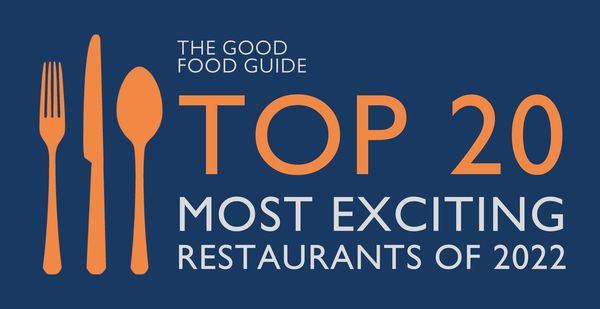Wine is a massive subject. For most of us, there is simply too much to learn and not enough time. With the price of wine in restaurants on the rise (in a quality restaurant, you will be lucky to find much choice under £50) a little wine knowledge will go a long way to ensure you get the best value for money on a night out. Andy Lynes, food writer and author of Smashed, spoke to six industry experts to get insights into how to navigate a restaurant wine list to avoid costly mistakes and hunt out the best value every time.
The experts
Queena Wong, wine collector and founder of Curious Vines
Douglas Blyde, wine columnist, critic, consultant and presenter and regular contributor to the Evening Standard and Drinks Business
Matthew Davison, sommelier at the World Class-rated Moor Hall, Aughton, Lancashire
Tom Gilbey, wine event organiser, sells wine through his website tomgilbey.com and has 128k followers for his highly entertaining and informative Instagram account (@tomgilbeywine)
Tom Fahey (TF), owner and chef of The Terrace Rooms and Wine boutique hotel, restaurant and wine shop, Isle of Wight
David Moore (DM), owner of Pied à Terre, London - one of the best wine lists in the city
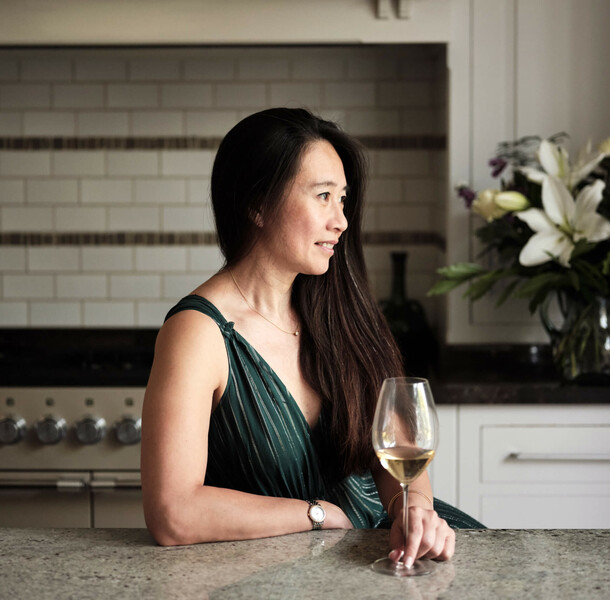
What are some of the tell-tale signs of a good wine list?
QUEENA: It doesn't matter whether it's 20 wines or 2000 wines. What's really important is that there is something for everybody – something that piques interest, or even manages to offer a glass of wine that surprises at a cheaper price point, and makes one think ‘that’s delicious, I want a second glass’. You want a solid list that gives you something that is interesting either for someone knowledgeable like myself or delicious to someone that doesn't know anything about wine. For each sommelier, I feel it is an expression of their own creativity and their craftsmanship. So, if they are a person who has a certain belief in a particular region or a particular style of wine, that's their prerogative as long as it ticks the boxes at different price points and for different interests.
MATTHEW: Accessibility and navigation are key. We have recently moved from our wine list being on a tablet to a printed copy, and have found it has endlessly improved our guest experience in terms of easier navigation. In terms of accessibility, a great list needs to showcase a breadth of price points to suit as many as possible and I find that having a really strong by the glass selection from a variety of producers is essential. So, for those who don’t necessarily want to drink/require a bottle, having a couple of interesting glasses can be just as, if not more, exciting.
Should I trust the sommelier? Aren’t they just going to try and sell me a more expensive wine that I had planned to buy?
TOM G: If you've got a massive wine list and you're in an expensive restaurant for goodness sake, don't do it yourself. Get the help of the sommelier and give them really clear instructions. For example, you don’t want to spend more than £50 and you want a full-bodied red. Don't be afraid, treat them like estate agents or car salesmen. Don't let them have one over on you. You are the boss, tell them what you want and they'll do a good job.
DAVID: A sommelier should be approachable. A good sommelier will warm to you instantly and is able to translate your garbled comments about what you've recently had and enjoyed into a bottle that he thinks you will love. An interesting sommelier will want to surprise you. Tell them, ‘I would normally have something like a Sancerre, do you have something more interesting at that sort of price point?’ I do think you have to actually say that that's your price point. Not every sommelier is as straightforward as ours, and the upsell is part of their job.
QUEENA: One reason to trust a sommelier is that expensive wines can go dormant for periods of their evolution; they get a bit sleepy and then they wake up, they have their chrysalis moment and they do this several times over their life span. That means, at times, you're not going to get the wine’s full deliciousness as it's meant to be. Because the sommelier is opening up their wines regularly, they’ll be able to tell you if it’s gone dormant or not.
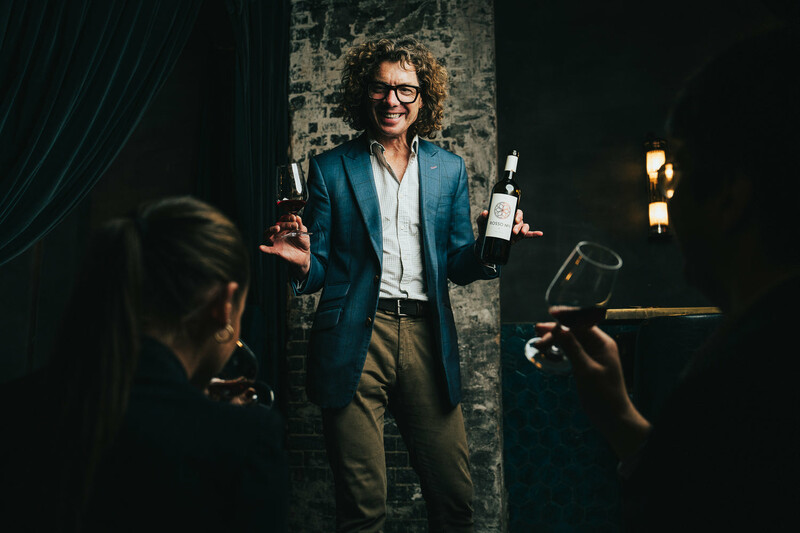
I’ve been served a bottle and I think it might be corked, what do I do?
DAVID: Unless a wine is blatantly wrong, and you know what you're talking about, I find the phrase ‘is this as you would want it to be?' or 'is this as you would expect it to be?’, offering the sommelier to have a taste, is like a get-out-of-jail-free card. You're not piping up and saying the wine's wrong, you're not showing any ignorance. If the sommelier is any good, they should explain what it is that you're tasting.
Should I always avoid the house wine?
TOM G: I think you should always order the house wine, because the house wine is the benchmark for any decent restaurant. I would never order the Prosecco. And the reason I wouldn't order this is because they're generally overpriced for what they are and not particularly exciting.
TOM F: In wine-orientated restaurants the house wine is likely to be very good. In more mainstream, everyday establishments where wine is just one element of a casual meal, the house is often chosen simply to achieve a price point. If you’re strapped and want the cheap option, just ask for a taste before you buy – house wines are almost always on by the glass so it shouldn’t be an issue.
MATTHEW: I think the term ‘house wine’ has such negative connotations, but I genuinely feel it depends on the establishment that you’re expecting to dine/drink in. You could, in theory, suggest that our ‘house wines’ at Moor Hall are the list of wines that we serve by the glass, but I would never use that term to describe them due to the aforementioned negative reference. If you’re visiting a wine-led establishment then there should be nothing to avoid at all. Then I still think you have to think about the mood you might be in. If a guest is looking for a fresh glass of dry white on a sunny afternoon, or a robust juicy red to contemplate a hard day at the office, and they don’t want to spend a fortune, then why not. Wine is always to be enjoyed and explored.
People say the second cheapest wine on the list is where restaurateurs put their worst value wine because it’s what people who don’t want to look like cheapskates by ordering the house wine will go for. Is that true?
TOM F: No, this isn’t remotely true. The real battle is trying to find something that isn’t pigswill for the cheapest wine because it’s the entry point and a real tone-setter for how consumers perceive your restaurant. Second cheapest – for me anyway – isn’t something I give any more thought to than the fifth, tenth or fiftieth cheapest.
DOUGLAS: I suspect the British tend not to worry too much about looking miserly, given their fondness for sharing a starter, avoiding pudding, and opting for tap water. I tend to order by the glass these days, which gives a wider experience, rather than opting for a one-size-fits-all bottle, wherever it comes from in the list. The by-the-glass list should always be a window into the wider list and filled with interest.
DAVID: It's not an industry thing to have your biggest markup on the second cheapest wine however the best value tends to be in the more expensive bottles where you're not looking at a three-or four-times markup, but you're looking for a cash return. So, a bottle that costs me, say £75 is on the list for £190; that's only two-and-a bit-times but it gives me a bit of cash.
MATTHEW: I think this entirely depends on where you are drinking. I dare say that there may be some chain restaurants/bars which use this tactic, but I definitely think that it is less commonly seen now.
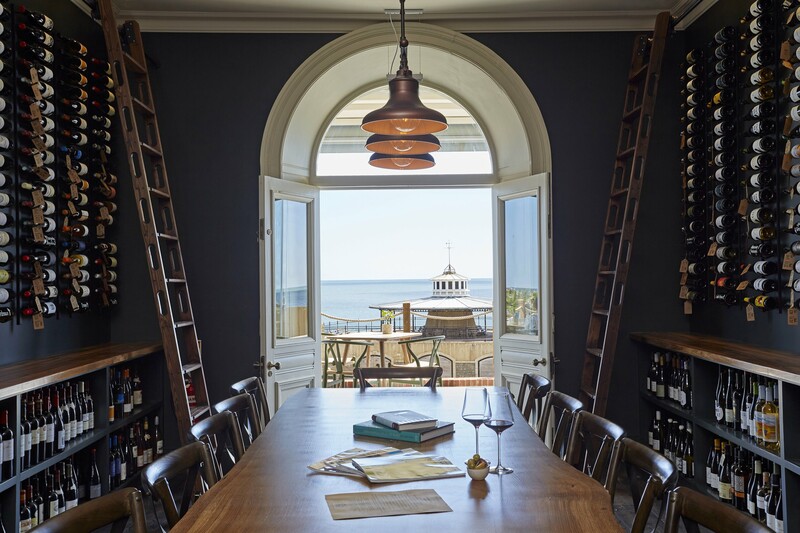
I am a wine idiot and I only drink 19 Crimes, prosecco and cheap Sauvignon Blanc, but I want to change. What are some grape varieties I could look for on a wine list that I haven’t had before that would be easy for me to enjoy and appreciate?
TOM F: Basically, you like wines with high sugar content because this masks both acidity and tannin. Try to find full bodied red wines with comparatively low tannin and whites with a bit of residual sugar. I’d suggest Rhone Valley wines with a high proportion of grenache and some age - Gigondas or Châteauneuf de Pape if you have the budget, or older Rasteau or Vacqueyras if you don’t. Older Cru Bourgeois Bordeaux is another good bet – wines with this classification are generally a bargain compared to the classified growths. If you get the right ones the tannins should have mellowed while the fruit hangs on. For whites, try a demi-sec Vouvray or German Kabinett under 11% alcohol. Another gateway wine out of cheap plonk is Asti, and a final one is New Zealand Sauvignon, I think possibly because of the huge fruit content.
DOUGLAS: Contrary to what you might have encountered, there are some excellent bottles from the land of Prosecco, including the vintage, handmade, single vineyard, Grave di Stecca by Nino Franco. Meanwhile, Gavin Quinney makes an excellent, bright Sauvignon Blanc and luxurious Sauvignon/Sémillon at Château Bauduc in Bordeaux for around £12 apiece (retail) – plus you can go and stay at the property and sip it by the swimming pool.
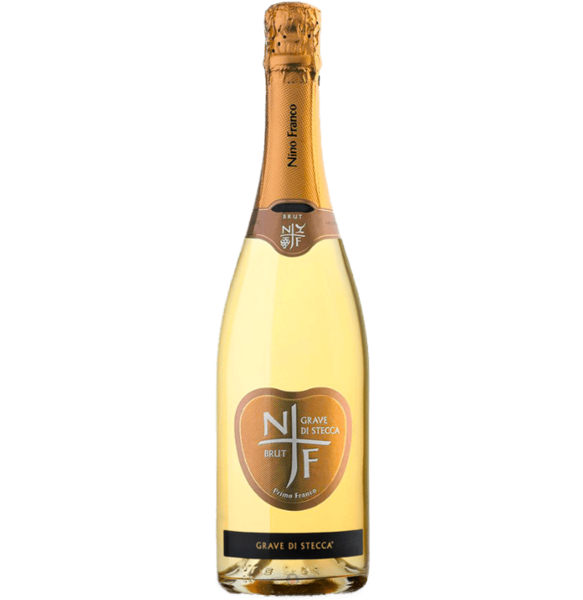
MATTHEW: For sparkling, there is an abundance of fantastic value English sparkling wines and crémants are making their way onto lists all around the country. We work with Gusbourne in Kent, and despite being made in the same way as wines from Champagne, their Chardonnay-based sparklers are racy and fresh. To stretch further afield, try Sekt from Germany and you’ll also find amazing sparkling wines from Tasmania.
Moving away from Sauvignon Blanc is never easy for the die-hard Marlborough and Sancerre lovers. However, try looking at the mineral styles of Assrytiko from Santorini, Roditis from Greece, or a beautiful Grüner Veltliner from Austria. If you’re seeking further obscurity, Carricante from Sicily is wonderful as is Verdejo from Spain – while these are much more commonplace now, they are wonderful alternatives.
For the bolder, juicier Malbec enthusiasts, try some Aglianico from southern Italy – these are intense and robust – or some spicy Blaufrankisch from Austria, these should do the job just as well. Portugal is still shaking a reputation for some of their tannic reds, but the Douro Valley is producing some outstanding quality wines worth seeking out as an alternative too.
QUEENA: If you are a Prosecco drinker, I would go to Trento D.O.C. (also known as ‘Trentodoc’) as an alternative – Ferrari is a producer that makes great stuff out there. Trento is a region near Verona and the wines get a little bit of ripeness and sugar from the sunshine that they get there. It has an interesting microclimate because it is near the sea and it's near the mountains, which provides a little bit of freshness. The flavour profile is more accessible than complex Champagne.
What regions around the world should I look at first on a list to find the best value for money at the moment (red and white)?
TOM G: I think the best countries to get really good value white wine on a wine list are Portugal and South Africa. For red, I love Italy because they're really good value. Southern Italy, Nero d’avola, Primitivo, generally anything from Sicily. I also look at Portugal for reds too. They're old world wines that go well with food rather than alcoholic fruit juice. I'd avoid a South African Shiraz if it's cheap because it would taste like blackcurrant jam. Whereas a South African Syrah that's a little bit more expensive will probably be a beautiful wine. Here's a massive generalisation, but if a red wine calls itself a Shiraz, I wouldn't go for it, if it calls itself Syrah I probably would.
TOM F: For red it is still very hard to buy a truly bad Rioja at any price point – the classification system guarantees some age which, when you consider the implication of holding wine that could be sold back in a cellar, is worth a great deal. For whites Italy can be superb value if you want something simple and fresh. I sell a lot of organic Grillo and Catarratto from Sicily that has no business being as affordable as it is.
DOUGLAS: England, not only for world-class single parcel sparkling wines such as Hundred Hills, but also for still wines like Devon Millow, an almost tropical, barrel-aged Bacchus created by chef Mark Hix and his fishing buddy, Robin Hutson - the founder of The Pig collection. Hungary has impressed me for good value reds, including the handsome Kovács Nimród Monopole 777 Pinot Noir encountered at The Devonshire.
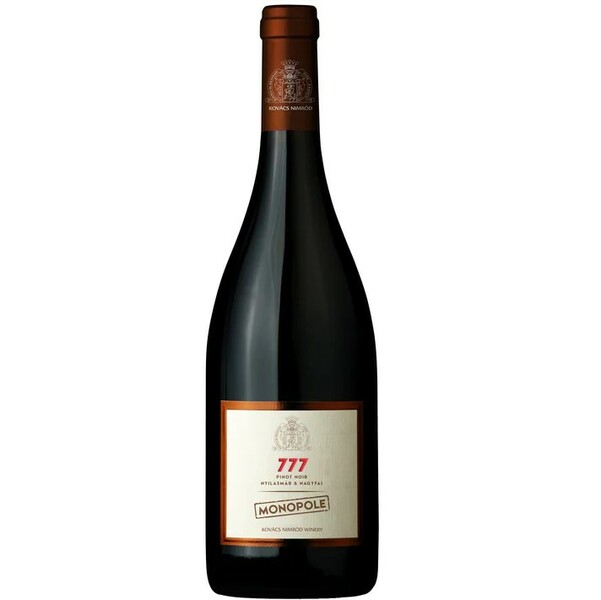
MATTHEW: Some of the best value whites I have tasted recently have been from Greece and Sicily, there is so much diversity in some of the indigenous varieties here. I love all Austrian wines and some of the reds made here make for remarkable value. Also tasted some fantastic wine from Northern Spain made with the Mencia grape.
DAVID: I usually head to the Loire Valley. I would stay away from Southern hemisphere Sauvignon Blanc for instance, I only really want to drink something that's maybe Touraine Sauvignon, Pouilly-Fumé or Sancerre. I always think you find value in the regions of France. You'll find also maybe more bottle age as well in an area where it's not so popular, it's maybe sat on the wine list like a nice Corbières. If I see a Limoux Crémant or a Limoux Chardonnay, you’re pretty much guaranteed good quality wine making.
QUEENA: If you want an alternative to red Burgundy, German Spätburgunder which is a kind of clone of Pinot Noir is great. South Africa is brilliant, they've got fantastic wines out there. I always get wines from Mullineux, I love the granite soils that they work on out there and the Syrah they make is fantastic. Mullineux Old Vines white is an extremely accessible white wine made from a blend of grape variety, it's at an accessible price point but it's absolutely delicious. Some of the producers in Austria are making lees-aged Grüner Veltliners, ageing them for a little bit more and then late-releasing them. They are really appropriate for food.
I love white Burgundy but I’m not made of money, what’s a cheaper alternative that would hit the spot?
TOM F: New Zealand Chardonnay. Typically, the style is crisp and light with buttery, smoky elements really subtle and well integrated. My favourites for value currently are: Kumeu River, particularly if you can find an older bottle of one of the single vineyard sites; Alex Craighead’s Don Barn Block; Michel Seresin’s Chardonnay; or for something bigger, Matawhero Church House Chardonnay from Nelson is fantastic.

MATTHEW: Look to Oregon. The Chardonnays and Pinots are often made with a traditional Burgundian style in mind, and the quality here is generally exceptional across the board. Yarra Valley in Australia also has many fantastic producers and would be my next choice.
TOM G: I would try and get one that's slightly lesser known like Viré-Clessé or a Mâcon-Azé or a Mâcon Solutre - Villages rather than a straightforward Macon Village. It would probably be a really, really good wine. Whereas if it’s a straightforward Pouilly-Fuissé or Chablis, that's going to be a margin trap. Alternatively, I would go for a well-made Chardonnay from South Africa or, and this is a little bit off piste because it's not a Chardonnay, I'd go for a white Rhône, a really good Crozes-Hermitage white, or even a Côtes du Rhône white, that ticks a lot of the same boxes for me as a white Burgundy.
QUEENA: If you're looking for affordable alternatives to white Burgundy, you would go to New Zealand or Australia (Margaret River, Yarra Valley) and South Africa, but also to the lesser regions of Burgundy itself, like Saint Aubin, some of the regions of Macon, and stay away from Chassagne, Mersault and Puligny.
I love red Bordeaux but I’m not made of money, what’s a cheaper alternative that would hit the spot?
TOM F: Our top alternative to this is Ram Paddock Red, an incredible Bordeaux blend from Wairapa in New Zealand which we currently have in the 2014 vintage. More generally I’d look to South Africa as they do the blends well. Morgenster’s Louren’s River Valley and Napier’s Red Medallion blow equivalently priced Bordeaux away for my money.
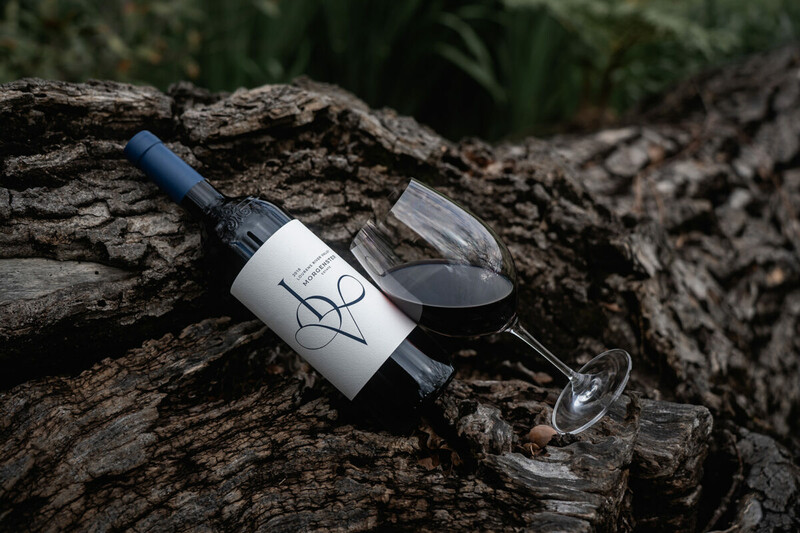
DOUGLAS: Mature Cahors from south west France, which is where Malbec has been made since Roman times. I often see tempting renditions lurking on wine lists.
MATTHEW: Cabernet/Merlot-based blends can be found throughout the world, Hawke’s Bay, New Zealand have some amazing examples, as does Washington State in the US – and will always provide great value for money against Bordeaux.
TOM G: I'd go to Italy: Cabernet, Merlot, maybe Sangiovese, that kind of thing. It would have that sort of rusticity that I want from a red Bordeaux. I would be trying to find a big and chewy wine. Whereas if you said red Burgundy, it's always very expensive and if it's not expensive, it's generally crap, but I would happily go with Pinot Noir from New Zealand, South Africa or maybe even the States, (although it'll probably be very expensive) or cool climate Australia. But Cabernet, it tastes very, very different from anything made in Bordeaux, wherever it comes from.
I am actually made of money/it’s a special occasion. I am fairly adventurous, what wines should I splurge on that will deliver for the money?
TOM F: Santorini Assyrtiko is incredibly interesting, universally high quality and delicious. Chablis has gone up a lot but Premier Cru from a good, emerging producer like Samuel Billaud, or someone underrated like Gilbert Picq or Domaine Pinson is always going to be special.
DOUGLAS: It is quite common to see bottles on wine lists in London that are so expensive it might be cheaper and more enjoyable to spend the same money on a first-class return flight to the origin of the bottle you are interested in and take a private tour and tasting at the winery.
MATTHEW: When splurging, it’s always worth keeping an eye on the vintages that you’re looking to buy from. If you are just looking to spend, be wary of the expensive Amarone’s that are less than ten years old, or your Bordeauxs and Burgundies from poorer years – despite coming from a well-known château, or a well-known village – Meursault/Puligny Montrachet for example. Choosing something too young or from a not-so-great year can leave you feeling quite underwhelmed. Some producers consistently deliver. I would happily splurge on Leeuwin Estate’s ‘Art Series’ Chardonnay from 2012, and Vega Sicilia’s ‘Valbuena No.5’ from 2014.

TOM G: I would go for a Super Tuscan. I'd always look to see if there is a Tignanello that's priced really well. I went into a pub the other day and saw a Château Lagrange 2009 from Bordeaux on a wine list for £90. That's a lot of money, but for that wine, it's not a lot of money at all. I'd be really wary of Burgundy unless I absolutely know the grower or there’s a really good sommelier because otherwise it’s Russian roulette.
QUEENA: Something really special would be a champagne with age. A very old Dom Perignon is absolutely delicious. I recently had a Veuve Clicquot La Grand Dame 1990 in magnum which was just spectacular. Aged Cristal is extraordinary. If you had something that was 50 years old, in that time it probably had numerous owners because of the nature of the secondary market. So that's the only thing that I would always be aware of. Look for ‘late release’ champagnes, like Charles Heidsieck Crayères Collection that have been stored at the château, they have perfect provenance because they haven’t been moved. If you're in a restaurant, it's actually safer to drink a vintage champagne because if it's not in good condition, you can send it back.
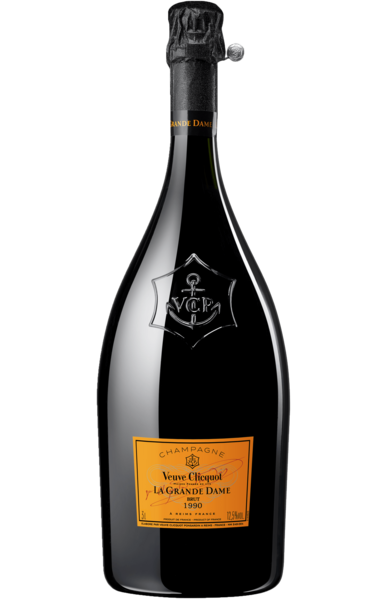
I like classically made wines. Are there any regions or producers that I should look for on a list of all natural wines that are more likely to appeal to me?
TOM F: Try some bigger-name producers of relatively classical wines made with low intervention such as Sylvain Pataille for Burgundy, Jean Foillard for Beaujolais, Josmeyer for Alsace, A&O DeMoor for Chablis and Auxerre, Forjas del Salnés for Alberino.
MATTHEW: I think there are some producers like Judith Beck (Austria) and Clemens Busch (Germany) who have styles that are more classically driven but made in a more hands off style. Foradori (Italy) make exceptional wines from local grapes too, also Henri Milan in Provence (France) makes some of the most delicious Burgundian style wines with Grenache and Syrah I’ve tasted. Whitcraft winery in the USA will not disappoint.
I now want to embrace natural wines - what are the really out-there producers I should look for on a wine list.
MATTHEW: There are many ‘cult’ producers and growers out there now, but the ones that I have been exposed to that I think are worth noting are Christian Tschida, Radikon, Gravner, Robinot, Gut Oggau and Frank Cornelissen.
TOM F: I don’t know if any of these producers are considered ‘out there’ but they’re certainly names in the world of natural wine making that will deliver a style the average drinker might consider odd, funky or even faulty. Gut Oggau, Pheasant’s Tears, Tillingham, Brett Brothers, Radikon, Chateaux Le Puy.
DOUGLAS: A happy medium could be champagne producer, Telmont, which produces a beyond organic cuvée, Reserve de la Terre, protected with some sulphur to stop vin turning to vinegar, though that’s still less than you would find in a dried apricot.
QUEENA: The amazing female sommelier restaurateur Honey Spencer has just opened up Sune in East London and she's got a very strong list of natural wines there. I had a 2021 Syrah from Maison Stephan, a natural producer in the Rhône that didn't even taste like a natural wine. Another place that's strong on natural wine is Compagnie des Vin Surnaturels in Covent Garden. The sommeliers believe in this style of wine and they are extremely passionate.

Wine people are always banging on about grower Champagnes, are they actually better than the Grande Marques? What are the names I should look out for?
DOUGLAS: Growers own and farm their own vineyards, which often means the resulting wines are more prism-like, versus Grande Marques, which draw from a much wider mosaic. A bit like single malt versus blended whisky. I rate Domaine Alexandre Bonnet Les Contrées 7 Cépages, which makes a point of starring historical grape varieties such as Arbanne and Petit Meslier alongside household names such as Pinot Noir and Chardonnay. While Growers tend to be small in scale, it’s worth noting that big isn’t always bad, as evidenced in Grande Marque, Louis Roederer, which owns 70 per cent of all of its vineyards.
MATTHEW: Maurice Choppin’s wines are all fantastic. I have also never been disappointed with anything from Laherte Frères, and Jerome Blin and Champagne Vauversin are all spectacular in their own right.
TOM F: Recently I have enjoyed Gamet’s Rive Droite for its huge, ripe fruit content, and André Jaquart’s Vertus for an almost Burgundy-like buttery, richness.
TOM G: It depends what the occasion was. Whatever you think of how good something like Bollinger is, if you are wanting to get the party started and you bring out a bottle of Bollinger, no matter what it tastes like, everyone's going to think, wow, this is something. But I think quality-wise, grower champagnes are often every bit as good and are probably better value for money. I particularly like Champagne André Clouet Bouzy, which is a noir, and I love Champagne Palmer.
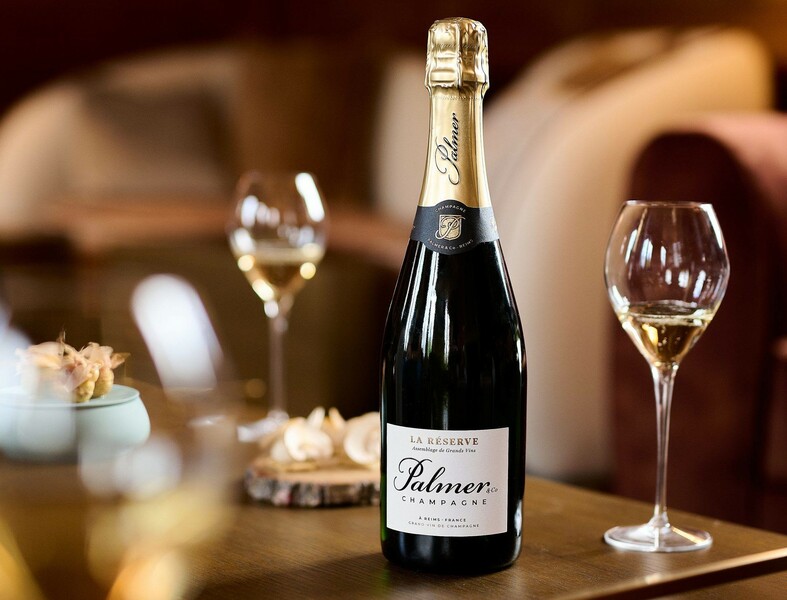
DAVID: The grand marks can be a go-to, for people who may be less adventurous or less willing to take a risk. With grower champagnes, you do need somebody to tell you what it is you're getting. If you don't, it's like a needle in the haystack. If I see Laurent Perrier I'm happy. I think the Grande Marques marks give you a sense of security. It's going to be well-made and it will be exactly the same in a very unsurprising way. You're going to enjoy it. But there's probably going to be more of a rollercoaster with grower champagnes. Gallimard used to be our house champagne but now it’s Franck Pascal.
QUEENA: The growers are doing incredible things. People think there are only three grape varieties that you can use in champagne, but there are actually seven. Because of global warming, growers are looking at the great varieties that will be better in holding freshness. They are challenged by things getting too ripe so they still want to maintain that lovely fresh aspect that you get with good champagne. Etienne Calsac makes Les Revenants with 50% Pinot Blanc 43% Petit Meslier and 7% Arbane for example.
A version of this article was first published in the newsletter Smashed by Andy Lynes.

